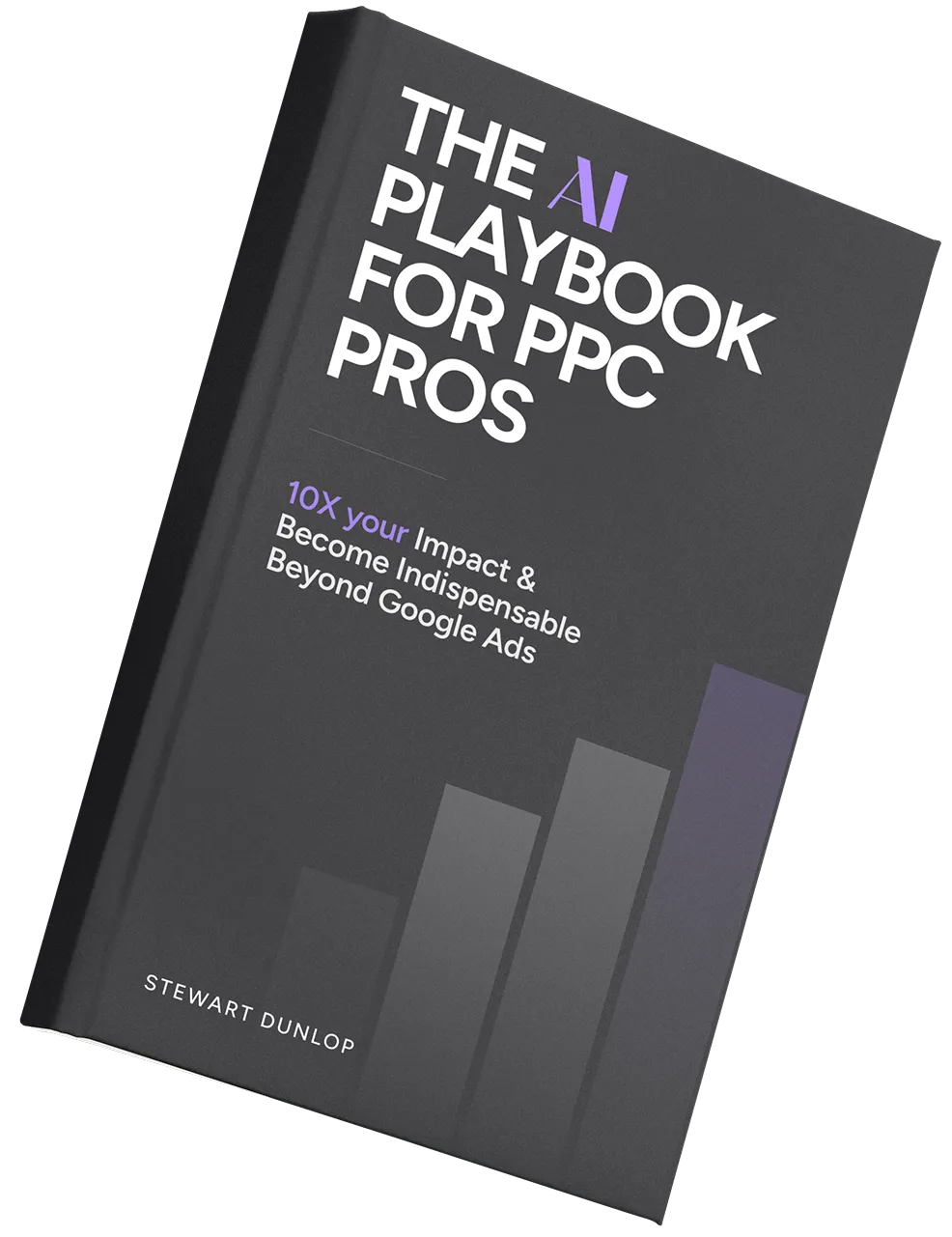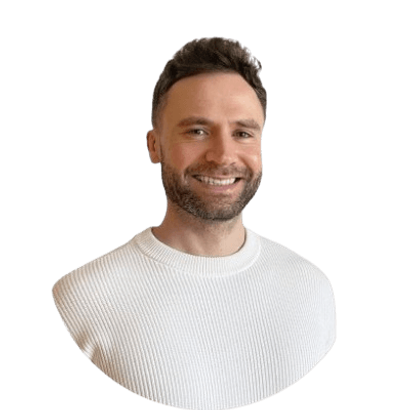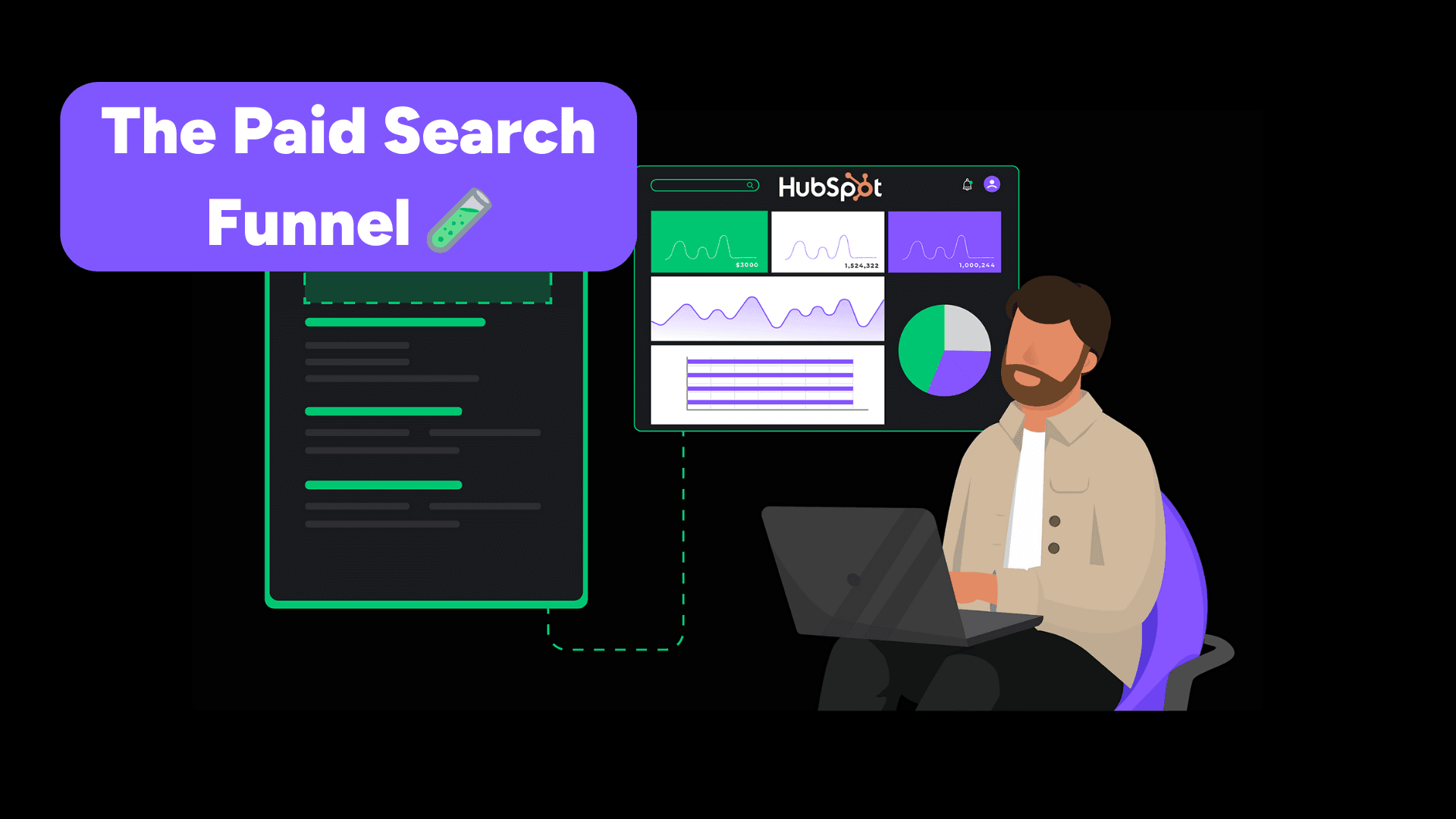
If you're running paid search campaigns, then you need to know exactly how to guide them from becoming aware about your product or service, right through to the point of actually becoming a paying customer.
This concept is known as the paid search funnel.
You need to reach and nurture your customers at every step of the journey if you want the best chance of converting them into paying customers
See below - here's a typical customer journey for someone searching for a hotel online.
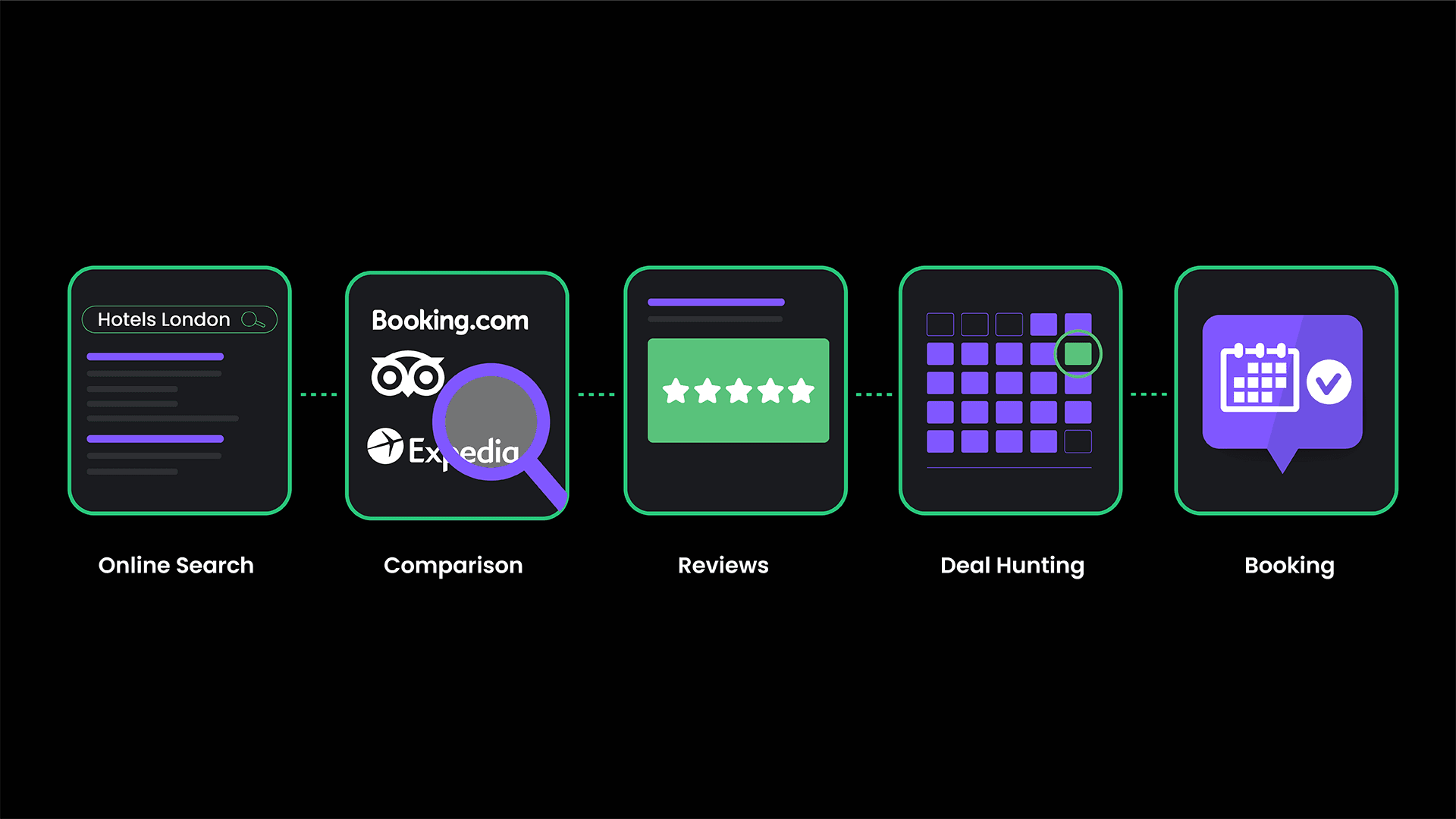
What Is The Paid Search Funnel?
Here are the 5 key stages of the paid search funnel.
- Awareness: First, you need to make customers aware of your brand. In paid search, this involves using broad keywords via Google ads that capture the interest of users. For paid social, this would include 'prospecting' campaigns hitting a very wide audience. The customer isn't necessarily looking exactly for your product yet, but now you've made them discover you. The ads placed at this stage are designed to introduce your brand and hint at the value it provides.
- Interest: Once awareness is established, you need to start nurturing the audience along. This includes targeting more defined keywords and also starting remarketing campaigns to people who already visited your website. The adverts you place at this point in the funnel are more informative and show what the key benefits of your brand are.
- Consideration: This next step is crucial. It's usually where your potential customer is comparing a few different options and looking to make their decision. Paid search efforts here focus on competitive keywords and phrases that indicate a higher intent, such as “best” or “reviews”. Ads and landing pages at this stage provide compelling reasons to choose your product, including comparisons and user testimonials.
- Conversion: The conversion stage is all about turning interested prospects into customers and pushing hard to get the sale. Targeting is more specific here, going after high-intent keywords like "buy" or brand searches. The ads are highly persuasive and might include time-sensitive benefits to push the user to order.
- Loyalty: Finally, the loyalty stage aims to retain and upsell customers - Because after all, most of your revenue is going to come after they make their first purchase! Paid search campaigns might target these individuals with ads for complementary products, loyalty discounts or exclusive offers. The objective is to encourage repeat purchase and upsells.
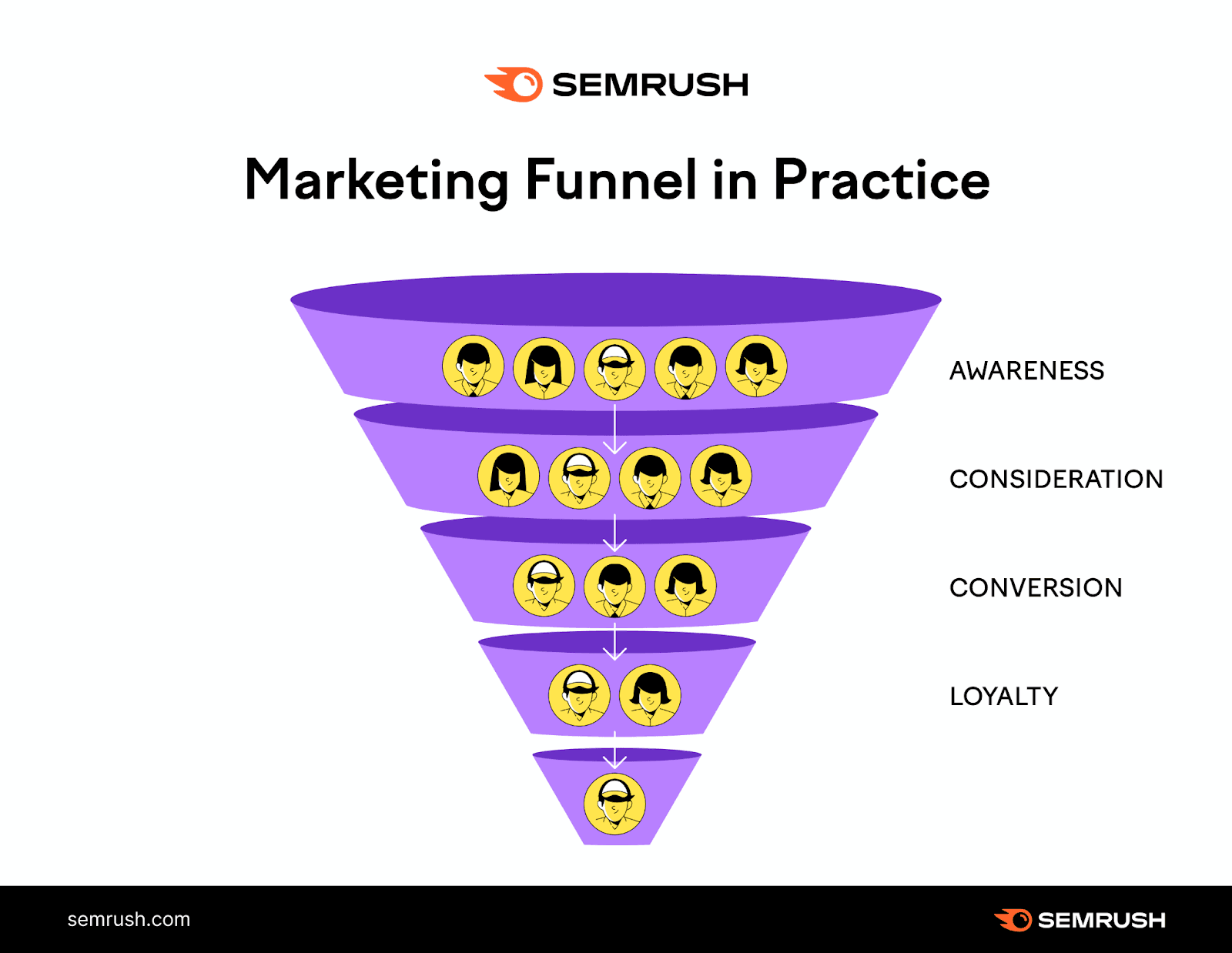
Key Summary
- The "paid search funnel" is a concept to target your customer at each stage in their buyer journey.
- First you create awareness of your product.
- Second, you develop interest for your product as the customer searches for a solution.
- Third, you get the customer to seriously consider your product amongst all options.
- Finally, you'll get the customer to purchase from you.
- Lastly, you'll develop a loyal customer and target them with complimentary products or offers.
The basic premise we're trying to explain here is simply this - If you only show up at the beginning stage of the funnel, then you're going to be far less likely to convert that person into a paying customer.
👉 Here's a graphic showing exactly how the paid search funnel works.

Why Is The Funnel So Important?
If you fail to market to your customer at any stage in the funnel, then there's a strong likelihood that they simply will not purchase your product.
👉 Let's illustrate this with an example.
Imagine you do a quick Google search for "running shoes" - a very broad search.
You're met with a ton of adverts for various brands ranging from Nike to Adidas, and you notice a smaller brand called "Cool shoes".
You're interested, so you click on the advert and see some very nice running shoes on the "Cool shoes" website.
But after clicking off the advert and getting on with your day, you never see the brand again.
Meanwhile, you suddenly start seeing adverts and emails from Nike and Adidas following you around wherever you go online.
That's the paid search funnel in action.
Brands like Nike and Adidas know they have to continuously show up throughout the buyer journey if they want to make that eventual sale.
How Does This Translate to PPC?
PPC marketers will often segment their campaigns based on the customer's stage in the marketing funnel.
In fact, you'll often see PPC marketers label their campaigns within Google ads accordingly depending on what part of the funnel that campaign is targeting.
Let's consider an example for running shoes.
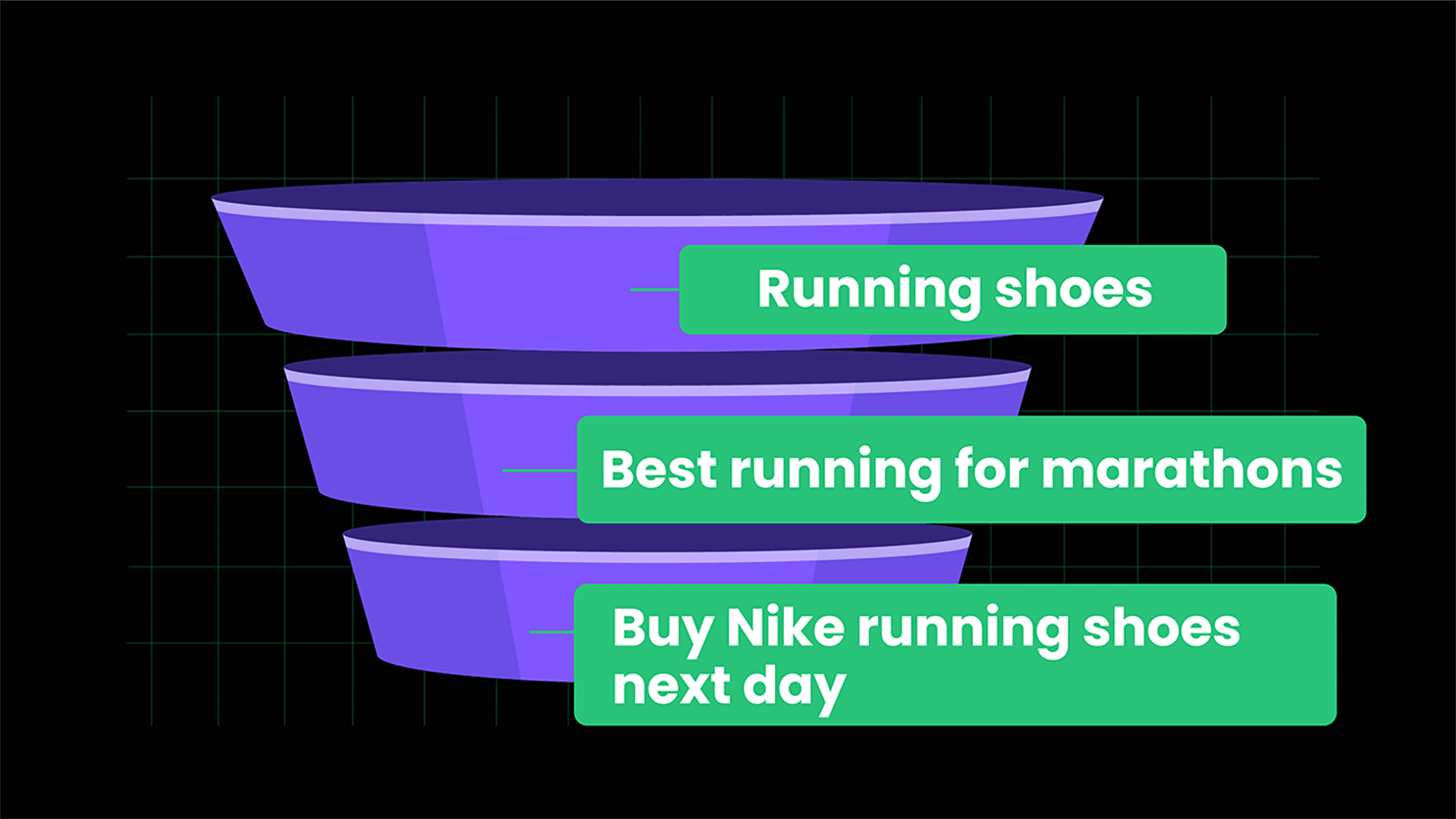
- Top of Funnel (ToF) Keywords: At this awareness phase, customers first become aware of products. Keywords like "running shoes" target broad categories for those at the beginning of their search journey. While top of funnel campaigns might not yield high returns immediately, breaking even is acceptable here as we set the stage for further engagement.
- Middle of Funnel (MoF) Keywords: This is where customers are starting to research more deeply. Here, PPC marketers would target keywords such as "best running shoes for marathons" or "Nike vs. competitor running shoes comparison".
- Bottom of Funnel (BoF) Keywords: When customers are ready to purchase, they use very specific purchase intent keywords like "buy Nike running shoes" or "Nike Pegasus running shoes" - Searches related to promotions such as "Nike discount code" or geographically focused queries like "Nike store near me" can also play a role here, and PPC marketers will look to take advantage.
Bringing The Paid Search Funnel Together
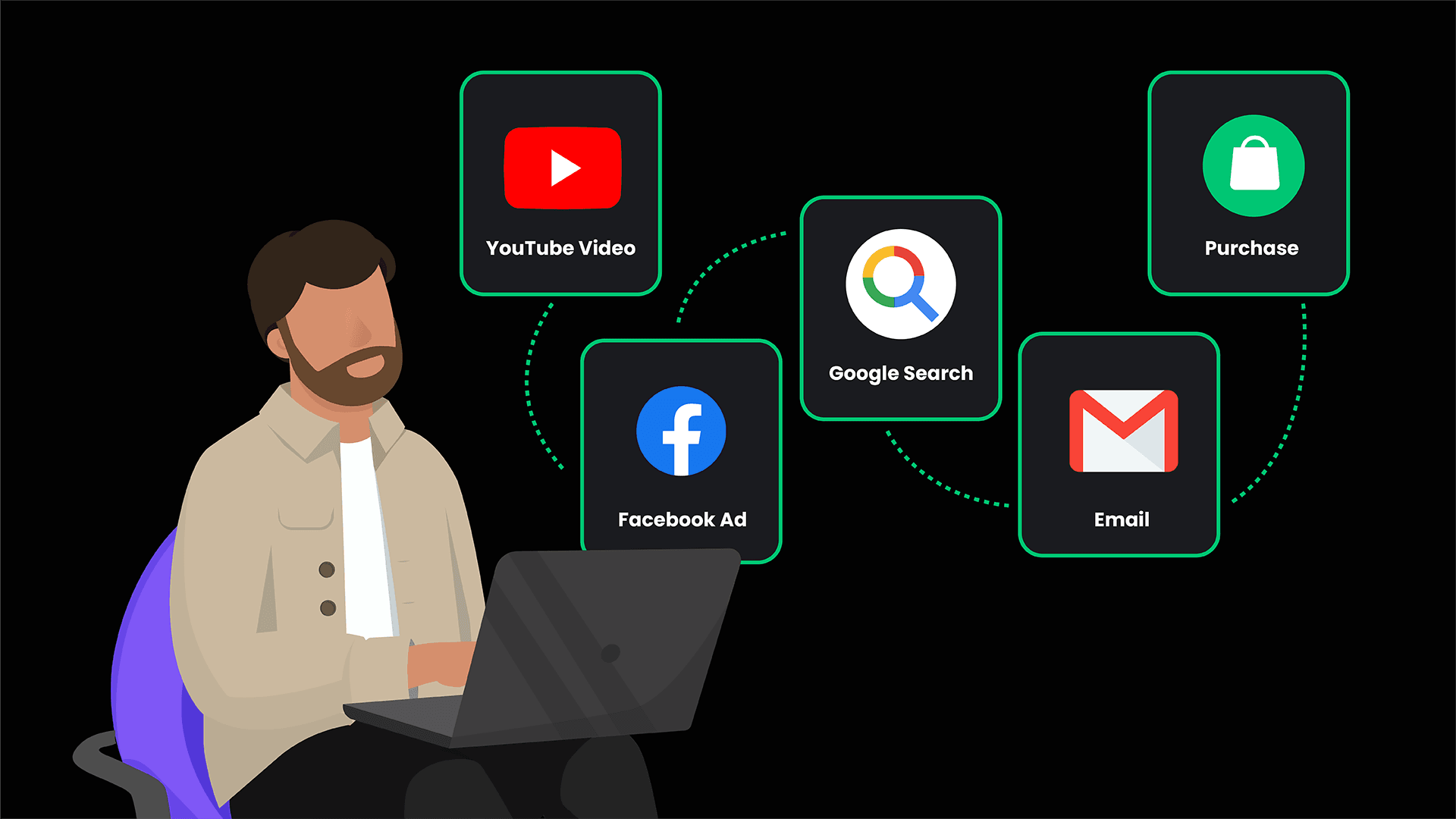
As marketers, we have to use multiple channels at our disposal in order to have the best possible chance of converting customers.
That's why we have to often have visibility across the entire internet, or at least on the major advertising platforms.
Key Platforms To Consider
- Search Ads - These generally take place across Google and Bing.
- Video Ads - Predominantly YouTube is where users are going to be spending most of their time watching video.
- Social Media- Facebook, Instagram, Twitter and TikTok are the predominant platforms right now.
- Email & Display - You can target customers in their inbox & on other websites by leveraging Google's performance max adverts, which use the power of AI to show your advert at the perfect moment in the right place to your potential customer.
By marketing across multiple different platforms and using the paid search funnel approach, you can be confident that you're advertising to your customer at every stage in their journey to purchase, and maximizing your chances of conversion.
